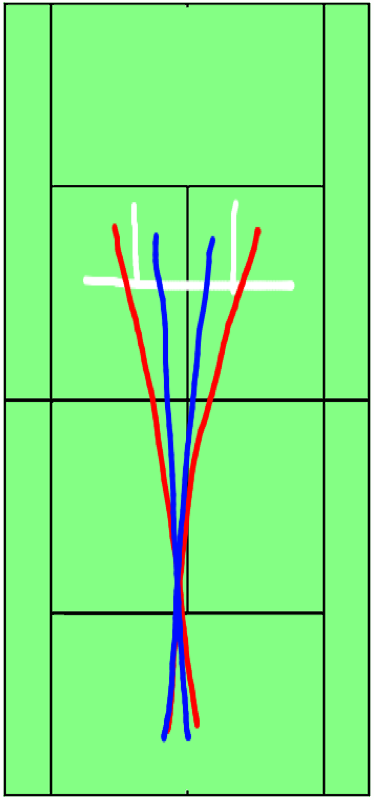Before Y2K, the junior landscape for gaining entry into Sectionals and Nationals was very different from what it is today. Currently, the USTA has implemented the point system which rewards players for reaching certain rounds in certain tournaments. The further you go, the more points you get.
Before the USTA implemented the point system, the junior ranking system consisted of your wins and losses. Players were required to fill out their "Player Record Forms" to submit to tournament directors, sectional offices, and the USTA for ranking and seeding purposes (you had to send it before the entry deadline through snail mail). It was all about who you beat and who you lost to. You were penalized for losing to poor players (you couldn't have a bad day all year) and you were also penalized for taking an injury default during a match (eliminated the mental shenanigans for weak players). The combination of your wins and losses determined your ranking.
Furthermore, in big sections like the South or Midwest, one had to qualify from parts of their state to make it to sectionals. For instance, Chicago might take 15 of the top players to go to Sectionals for a 128 draw. You had to qualify, no silly exemptions, everyone had to play. Whether you were Jack Sock or #533 in Chicago, you had to go through the avenue to get to Sectionals. Then to get to Nationals (Clays, Hards, Indoors), one had to be in the top 15 in the Section of the Midwest Section. The draw size was not 192, it was a smaller 128 draw with clear cut quota spots for each section.
The competition was viscious and everyone had to go through this pipeline. Nobody could duck competition, everyone had to face the music and display guts. The best tennis players were rewarded and it promoted a certain amount of toughness. The mentally weak were weeded out and the sneaky parents couldn't buy their way to the national tournaments (abuse of point system today). Kids were tougher and college coaches could rely on that stats the ranking system spit out. Today, college coaches have a harder time deciphering who is the real deal when the system is all about points, skipping levels, ducking tournaments, playing ITFs, playing Pro Circuit Events, and such.
Back in the day, only the top 10 players from SoCal would be able to attend Nationals. Think about how viscious the competition was? Think about how good it was for the kids to experience this type of pressure, year and year, multiple times per year? It allowed amazing players to develop and nobody was allowed to cut corners. People who were left behind had to fight that much harder, there was no other way to Kalamazoo!
Parents: Next time you whip out the credit card to travel 1000 miles to a tournament to get his/her ranking up, save your money. It's not money well spent. A better option is to play a local tournament at his/her level (don't play up) and make them prove time and time again, they can handle the pressure of winning. All college coaches will not be fooled by points, they will first check how they did against the top players and who they lost to. It all comes down to wins and losses.
 Monday, October 31, 2011 at 05:24PM
Monday, October 31, 2011 at 05:24PM  CAtennis
CAtennis 


